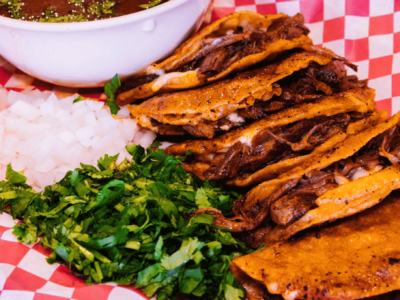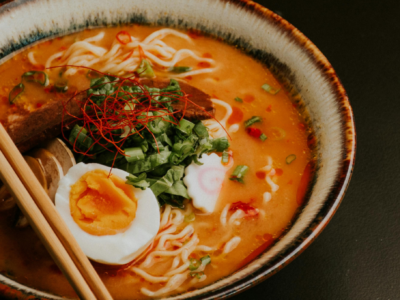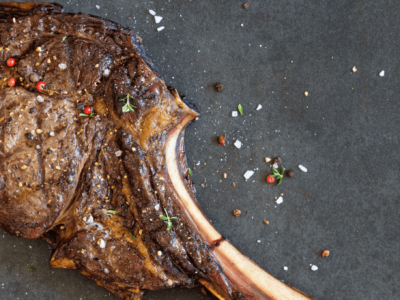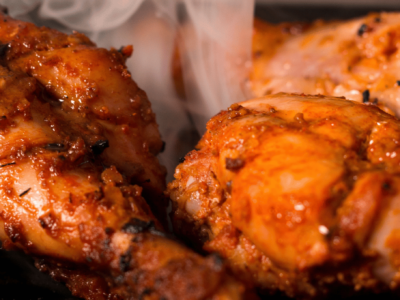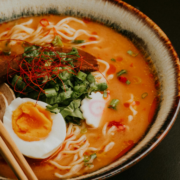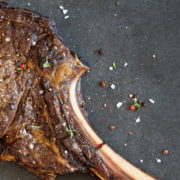Japan’s former capital, Kyoto, is home to some of the best food in the country. While looking for the best food in Kyoto, we stumbled upon the rich culinary tradition of the city.
The local food culture here is delicious, not to mention diverse, ranging from the simple (albeit vegetarian) shojin ryori to the much more aristocratic kaiseki course dinners or even the simple obanzai homely cooking.
While some eateries look back at the gastronomic part of the city for inspiration, others prefer experimenting with innovative flavors.
Moreover, fusion restaurants combine techniques and ingredients of Kyoto cuisine with different cooking styles from different parts of the world.
Additionally, Kyoto’s Pontocho nightlife area is one of the best food hubs in the city, with good fusion spots alongside traditional places.
Not very far away, we also came across the Gion district, which has a wide range of dining opportunities, such as the Kyoto Station area.
Everyday Japanese food that isn’t associated with the former food capital of the country, such as Udon, Sushi, and Ramen, is also available in the city.
Moreover, food connoisseurs shouldn’t miss visiting the popular Nishiki Market located in central Kyoto. The market has been serving Kyoto for centuries now.
So, without wasting time, let’s get started with the best food options to try in Kyoto.
Contents
So, What To Eat In Kyoto?

Let’s break this down – we were looking for the best food in Kyoto that you must try at once. Trying out some sushi for fun is not equivalent to finding the best – the idea is to find the best of Kyoto that you won’t find anywhere else.
FYI, Kyoto is the tofu capital of Japan – its Buddhist vegetarian and kaiseki cuisines are something you cannot miss. It is also a fantastic space for sampling all the classics of the world-famous Japanese cuisine.
Moreover, Kyoto’s food is popular for its delicate and refined taste. While you are in Kyoto, you should sample some of the main specialties of the city:
- Herring Soba (Soba & Nishin Soba),
- Obanzai,
- Saba Sushi,
- Kyoto Ramen,
- Green Tea (Matcha) Desserts,
- Shojin Ryori, and
- Okonomiyaki or savory Japanese pancake.
The 7 Best Food In Kyoto That You Must Try Once:

Inspired by samurai, priests, and royalty, Kyoto’s local cuisine has evolved into a balance of traditions and innovations over the past hundred years.
Moreover, there’s so much to check out. So, without wasting time, let’s check out the best local food options in Kyoto.
1. Herring Soba (Soba & Nishin Soba):

If you still haven’t heard about soba, it’s basically buckwheat noodles, and you will practically find it everywhere. So, why should you eat herring soba in the city of Kyoto?
First things first – Kyoto is famous for its high-quality water. As a result, Kyoto is popular for its soba, sake, and tofu. All these need a solid amount of water for production.
So now, let’s address the food culture of Kyoto.
Primarily, Kyoto is surrounded by a rugged landscape and mountains. As a result, people here weren’t able to access any fresh seafood in the past. That is the reason why they were able to develop cooking techniques aimed towards preserving food.
Coming back to Herring Soba – in Japanese, it’s known as Nishin Soba. Don’t confuse Nishin Soba with Nishin Cup Noodles. In this region, back in the 19th century, you could find herring cooked in sugar and soy sauce as a popular source of protein.
Eventually, a restaurant chef began to serve herring and soba noodles. Since then, noodles have gained popularity across Japan.
Moreover, you can also eat soba noodles with different toppings like curry, duck, and tempura. But when you are visiting Kyoto, ensure that you are trying out the famous Nishin Soba – they typically serve it warm.
2. Obanzai:
Okay, so here’s another Japanese word for you – Obanzai is not just a single dish but a number of small dishes. It’s almost Japan’s version of tapas, but unlike the Spanish tapas, these small dishes are made with local veggies from Kyoto.
These traditional dishes are native to Kyoto and are a must-try. FYI, Kyoto is popular for its farm-fresh vegetables. There’s even a nice Japanese term for the same: Kyo Yasai. Now, this sounds like great news for all vegetarian foodies!
It can get really tough to come across good vegetarian dishes in Japan. But you should still be careful, considering there are some restaurants that use Japanese fish broth or dashi broth.
Undoubtedly, Kyoto is a place to go if you want to try these delicious veggie dishes. Moreover, you will find around 32 different local vegetables here.
Additionally, these vegetables are seasonal, such as daikon radishes in winter and eggplants in summer.
3. Saba Sushi:

Of course, Japan is the land of sushi, so how can we not mention sushi while writing about the best food in Kyoto?
Historically, people living in Kyoto weren’t able to access fresh seafood easily since it is located really far from the sea. People used to eat fish, but it was either delivered from the north or the west.
Naturally, that brings us to an important question in this context: Is Kyoto not a good spot for sushi?
The answer, friends, is both yes and no. While the city houses some of the best sushi restaurants in the world, we think you should definitely try out Saba Sushi.
So, basically, Saba or mackerel sushi is a traditional Japanese dish that you will find in Kyoto. Back in the old days, people in the North used to cover the mackerel with salt and deliver it to Kyoto.
Locally, people used to eat it on special days – yep, it’s not really a daily meal like the small plates of Obanzai.
Currently, chefs simply marinate the mackerel in vinegar and then press the same with rice for making saba sushi, which happens to be really different from the everyday nigiri sushi.
The best part about this sushi?
So, it brings out a delicious combination of flavors – the sourness of vinegar and the fattiness of fish. Moreover, it is a little different from the regular sushi that we are typically used to eating – tasty, authentic, and unique.
4. Kyoto Ramen:
Yes. Ramen again.
Lately, it seems like Ramen is everywhere – in grocery stores, on global menus, and literally everywhere.
But the thing about Japan is that Ramen flavors vary from region to region. For instance, if you visit Hokkaido, you will come across fermented soybean or miso ramen as well as ramen with corn and butter as their toppings.
Similarly, the ramen you will find in Kyoto has its own flavors. Here, you will come across pork broth ramen or Tonkotsu.
Originally, Tonkotsu wasn’t located in Kyoto, but since it is a big college town, ramen is pretty popular amongst college students and locals.
In fact, there are multiple good restaurants for ramen across the entire city. Moreover, if you are a fan of ramen and you have some additional time in your hand to explore the more non-touristy regions of the city, definitely check out the Ichijoji neighborhood.
In the tiny Ichijoji neighborhood, you will spot over 20 shops that serve ramen, including the national ramen chain hailing from Kyoto, Tenkaippin.
While trying out the ramen at Tenkaippin is your safest bait, we also recommend the small, local shops since they serve the most authentic ramen in Kyoto.
5. Green Tea (Matcha) Desserts:

In the early 9th century, when green tea first made an appearance in Kyoto, hailing from China, it gained immediate popularity across the whole of Japan.
We loved Uji – it’s one of the most costly green teas we have come across in Kyoto. Even here, there are so many stores selling green tea and cafes serving various types of products made from green tea.
While you might have already heard about several green tea desserts like Sencha, Ryokucha, or Matcha, here’s our recommendation.
- Ryokucha:
Ryokucha is an umbrella term for green tea. Both green and black tea are produced from the same type of tea leaves, while Japanese green tea production is done through steaming, unlike pan-firing production, like Chinese tea.
- Sencha:
Sencha is one of the most popular, not to mention common types of green tea you will find in Japan.
- Gyokuro:
Gyokuro is one of the most costly green tea. These tea leaves are similar to Sencha and are typically grown under a protective shade before plucking to bring a relatively sweet flavor.
- Matcha:
When Gyokuro leaves are ground into a delicate, fine powder, they immediately become Matcha. Chances are you have heard about Matcha – during Japanese tea ceremonies; matcha is served with whisks.
6. Shojin Ryori:
Buddhism arrived in Japan as early as the 5th century. Along with Buddhism, 2000 Zen temples also came up across the whole of Kyoto.
With different monks living in these temples and working on their own style of cooking known as Shojin Ryori, it was about time that people visiting Kyoto got to enjoy these delicious plant-based dishes, best served in the city’s monasteries and local eateries.
As per Buddhist traditions, Shojin Ryori avoids any strong flavors like onion and garlic. Instead, this style of cooking uses fermented and dried soybean-based food items such as tofu to create nutritional and balanced meals.
So, if you want to try out these plant-based dishes, you can book your accommodation at any of the Buddhist temples. That way, you will get to try authentic Shojin Ryori.
7. Kaiseki:

While looking for the best food in Kyoto, we came across Kaiseki cuisine. While Obanzai’s style of cooking is all about home-cooked meals, this cuisine originates from the noble legacy of Kyoto.
Based on Washoku, a Japanese principle of harmony, this sophisticated style of cooking is all about uniting artistic presentation with seasonal local ingredients.
Although visiting any authentic restaurant that serves Kaiseki cuisine can turn out to be very expensive, this kind of dining experience is absolutely unforgettable.
This kind of cuisine shares plenty of similarities with French haute cuisine, originating most likely from the Edo-period banquets known for aristocratic diners who used to gather together over extravagant meals.
So, while you are staying in Kyoto, it is only natural to book a Kaiseki-style meal – you simply cannot miss out on the same!
Bon Appétit!

And that’s a wrap on the best food in Kyoto!
As Japan’s former capital, Kyoto stands to benefit a lot from its unique culinary traditions that have developed over a long period of time.
While the country is known for its delicious seafood found in the surrounding oceans, the distance of Kyoto from the sea coast ensured that its cuisine did go in a different direction.
Located near the heart of the Japanese archipelago, Kyoto’s cuisine and culinary culture result from its particular geography and climate.
Moreover, the region experiences both inland and coastal climates that are known to foster a range of regional vegetables, legumes, and herbs that serve as crucial ingredients in several local dishes.
Alongside its distinctive ecology, a nostalgic past has impacted Kyoto dining significantly. Moreover, as the seat of Japan’s Imperial House over the past thousand years, Kyoto has managed to benefit from royalty.
Additionally, the noble class has developed their independent dining traditions, such as the Kaiseki ceremonies.
Also read

